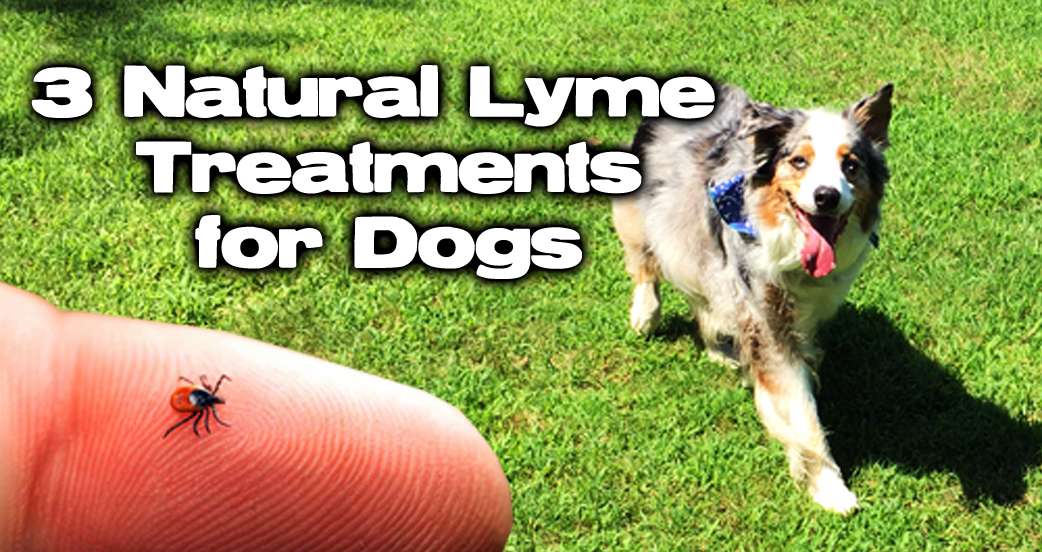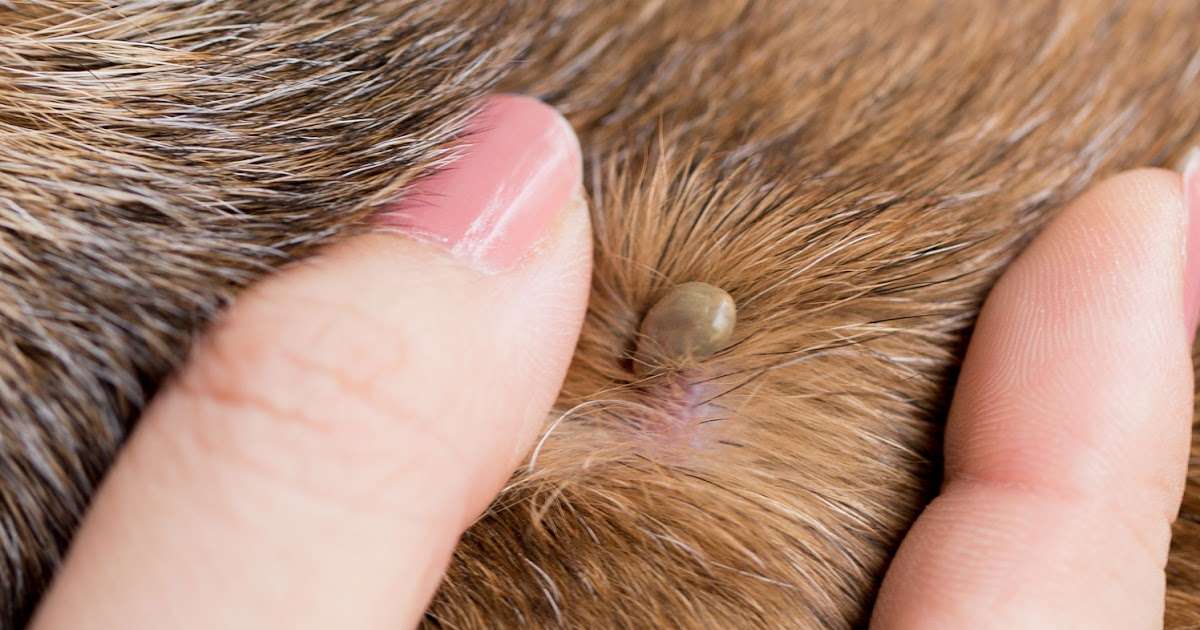Testing For Kidney Disease
Tests to diagnose kidney disease include complete blood count, serum biochemistry, and urinalysis. These blood tests will determine if your pet is anemic, determine white blood cell counts, measure blood urea nitrogen, creatinine, and electrolytes. A urinalysis is essential for the proper interpretation of the urea and creatinine values in the serum biochemistry profile and may also provide important clues to the possible underlying cause of kidney disease. A urinalysis will also determine the specific gravity, pH, presence of blood in the urine, and the amount of protein in the urine. An evaluation of the urine sediment will determine the presence of red blood cells, white blood cells, bacteria, crystalline material, and cellular casts all of which provide information to determine the underlying cause of kidney disease in your pet. Further diagnostic tests may be recommended based on the results of these initial screening tests.
Alternative Lyme Disease Therapies For Dogs
With an estimated 10,000 to 15,000 new cases of human Lyme disease diagnosed annually, its not surprising that holistic health practitioners are experimenting with therapies that support or replace conventional treatment, especially because conventional treatment has adverse side effects and is not always effective. Numerous herbal, nutritional, and even aroma-based therapies have helped people with Lyme disease. In fact, because the treatments worked so well, they have been given to Lyme-infected dogs with excellent results.
The following have not been tested in scientifically controlled studies, and they havent been tried by the veterinarians I interviewed. However, the information offered by the practitioners interviewed below is compelling. If you are interested in using one of the products described below, ask your holistic veterinarian for help.
D-Lenolate olive leaf extract
Some herbal products are effective alternatives to antibiotics and kill pathogens so effectively that they, too, cause a die-off reaction. Les Nachman, Director of Herbal Technology at East Park Research, which manufactures d-Lenolate olive leaf extract, reports that thousands of human patients have successfully treated their Lyme disease with this product alone.
Spirochete
Teasel root tinture
Propolis, Lomatium, and Waltheria Formulas
Essential oils
Hydrosols
Green Terrestrials Auntie Lyme tea
Immune-stimulating herbs
What Happens If Lyme Disease Goes Untreated
Treating Lyme disease in a timely manner is absolutely crucial to your dogs health, otherwise its complications can cause even more severe problems. Dr Muller further warns, Lyme disease can lead to serious damage of the heart, nervous system, and kidneys.
Dogs who are not treated for Lyme disease may find themselves with any of the following conditions:
- Inflammation of the kidneys, and in severe cases, kidney failure. Symptoms of this kidney failure include increased thirst and urination, vomiting, diarrhea, swelling of extremities, and lack of appetite. This can be fatal.
- Chronic pain from arthritis
- Heart problems
- Seizure disorders or facial paralysis as a result of damage to the nervous system
Many of these issues, if left untreated, can be potentially fatal, so the answer is clear. If your dog is diagnosed with Lyme disease, take care of it as soon as you possibly can.
You May Like: How Do Dogs Get Lyme Disease
Zoonotic Risk Of Lyme Disease
Dogs cannot directly transmit Lyme disease to people however, they can carry unfed infected ticks into a household where they might feed on humans. In addition, people are often in the same Lyme diseaseendemic areas as the dogs and can independently become infected.1 Increased incidence of dogs with Lyme disease can be used as an indicator for human risk in the same area.6
Can We Test Fluids Other Than Serum

Yes, CSF samples can be submitted from horses with neurological signs. The CSF sample needs to be submitted together with a serum sample from the same animal and taken at the same time. The relative increase of antibodies in CSF can indicate local production of antibodies in the CNS. Typically, one or two antibody values are increased more than 2-fold if B. burgdorferi contributes to the neurologic condition.
For other samples, contact the lab first .
You May Like: Central Nervous System Lyme Disease
Natural Treatments For Lyme Disease In Dogs
Lyme, and many of its co-infections, are common in companion animals, although Lyme can infect nearly all animals on the planet. A number of people, concerned about their pets, and exasperated at the lack of progress by their vets, reported good success once they began using the protocol I developed for people on their dogs .
So, I want to share it with you too.
Here are 6 natural treatment options for Lyme disease in dogs.
Generally, improvements begin to occur within two to four weeks.
Please note that all of the herbs can be given simultaneously and all the herbs may be used along with antibiotics. Also, if your dog is very small, use smaller doses, if larger use more. The doses I am giving here are for a medium sized dog. And yes, you can use liquid formulations as well. I just prefer to use the herbs themselves.
Kidney Damage Caused By Lyme Disease
More serious complications, although uncommon, include:
-
Damage to the kidneys
-
Rarely, heart or nervous system disease 1,2
Lyme disease sometimes leads to glomerulonephritisthe inflammation and accompanying dysfunction of the kidney’s glomeruli .
Eventually, kidney failure may set in as the dog begins to exhibit signs such as vomiting, diarrhea, lack of appetite, weight loss, increased urination and thirst, and abnormal fluid buildups that can appear as swollen limbs.
You May Like: Do You Have To Fast For Lyme Disease Blood Test
Natural Lyme Treatments For Dogs
When it comes to Lyme disease and exposure to the biting bugs that carry the disease i.e. ticks, fleas, mosquitoes, horseflies, etc. your dog may be your canary in a coalmine. In other words, because your furry friend is rambling through areas of higher exposure to these bugs than you, it may get exposed to Lyme disease before you do.
Consequently, you may notice your dog exhibiting the following symptoms, and if you do, you should contact your vet to have your pet tested for Lyme disease:
- Stiff joints
- Depression
- Gastrointestinal problems
Like with humans, a 4-6 week course of doxycyline has the highest potential to knock the infection out and keep it from going into the chronic phase if caught within the first 60 days of infection onset.
However, if you dont catch it in time or if you are not interested in giving antibiotics to your pet, there are three natural treatments with high levels of effectiveness.
Diagnosis Of Lyme Disease In Dogs
Because Lyme disease may not cause any obvious clinical signs but can still be fatal, its important to test your dog every year for Lyme disease if you live in an endemic area, and 4-6 weeks after a known tick bite . Most testing is done based on clinical signs or history.
In the clinic, your vet will test for the presence of antibodies to the Borrelia burgdorferi bacteria. This is just a quick positive-or-negative snap test. If the result is positive, this means antibodies are present, and your vet may send a more specific test to the lab to determine the approximate number of antibodies. A high number indicates an active infection is likely, whereas a low number may indicate that your dog was previously exposed . Some dogs may retain antibodies to tick-borne bacteria for several years after being exposed.
You May Like: Alpha Gal And Lyme Disease
How Is Lyme Disease Treated In Dogs
Breathe easy: if caught in time, Lyme disease can be easily treated in dogs. The treatment includes antibiotics for a duration of usually for at least 30 days, as well as supportive medication if needed, Dr. Muller tells us. In order of use, those antibiotics are typically doxycycline, amoxicillin, followed by azithromycin. At times, dogs may need longer durations or more rounds of antibiotic treatments. Depending on how long they were ill, your pooch may also need therapy and treatments for individual organs or systems that have been affected by Lyme, especially the heart, nerves, joints, and kidneys.
Topic 4b: Treatment For Bbseropositive Dogs With Pln
For clinically stable seropositive dogs with mild changes of PLN recommendations include antimicrobial treatment, evaluation for evidence of other possible causes of proteinuria , and management of proteinuria, hypertension, and hypercoagulopathy based on established standardofcare guidelines including a reninangiotensinaldosterone system inhibitor blocker), antithrombotics, protein and phosphorusrestricted diets based on IRIS staging, omega3 fatty acids, and antihypertensives if needed., , For dogs with more severe, persistent, or progressive glomerular disease, or complications such as vomiting, dehydration, edema, effusions, or worsening azotemia, additional recommendations include antiemetics, crystalloids or colloids, aldosterone antagonist diuretics, phosphate binders, and treatments for chronic kidney disease as needed., , In addition, immunosuppressive agents are indicated if there is biopsyconfirmed evidence of an active immunemediated pathogenesis ,, or even without biopsy confirmation in nonresponders or those with rapid progression, severe azotemia or severe hypoalbuminemia ., ,
Don’t Miss: What Can I Give My Dog For Lyme Disease
Topic : What Testing Is Recommended For Healthy Animals
Panelists recommended that a qualitative Bb antibody assay be included with annual wellness and preventive care for healthy dogs living in or near endemic areas in North America . Screening for Bb antibodies allows: followup proteinuria screening for all seropositive dogs and early intervention for possible Lyme nephritis , followup minimal data base including CBC and serum biochemistry to identify cytopenias and kidney disease associated with tick and wildlife exposure, identification of seropositive dogs that may indicate risk of exposure of humans, horses, cats or other dogs in the area and the need for modification of preventive protocols and, recognition of successful preventive strategies in high risk areas. Panelists identified potential pitfalls when screening healthy dogs, including the potential for overuse of antibiotics in rare dogs with false positive assay results, overuse of antibiotics in healthy dogs that would never develop LB, assay expense, induction of anxiety in the owner, and the additional time necessary for owner education.
Statement: It is recommended to screen all healthy dogs that live in, live near, or travel to Bbendemic areas in North America for Bb antibodies. It is recommended to screen all Bbseropositive dogs for proteinuria .
Prepatent Period And Environmental Factors

-
Whole-cell-based serologic assays for IgG reactive to B. burgdorferi first become positive 4 to 6 weeks following infection IgG titers reach their peak approximately 3 months postinfection and may persist in the absence of reexposure for several years. In naturally infected dogs, whole-cell-based IgM titers persist for several months and thus cannot be used to confirm a recent infection.
-
Antibody titers to C6a diagnostic peptide based on an invariable region of the VlsE surface protein of B. burgdorferi that has become widely used for serologic testingincrease quickly upon initial infection. However, most dogs that are seropositive to C6 do not have any evidence of clinical disease and do not go on to develop chronic disease.
-
When persistent infections with B. burgdorferidevelop in individual dogs, these infections may persist for several years. In addition, reinfections or coinfections with other tick-transmitted organisms may occur following future infestations with infected ticks from the environment.
Recommended Reading: Can Lyme Disease Cause Spinal Stenosis
To Safely Remove A Tick Please Do The Following:
How Is Canine Lyme Disease Treated And Prevented
Because Lyme disease is a bacterial infection, it can be treated with antibiotics, once an animal has been examined and tested positive. The antibiotic of choice for canines is doxycycline. Treatment lasts for up to 4 weeks.
The Cabbagetown Pet Clinic offers a comprehensive Cabbagetown Care Program, which includes a canine Lyme vaccination. This is the only way to assure dogs in endemic and expansion areas, such as Toronto, are protected.
You May Like: Symptoms Of Dog Having Lyme Disease
Signs Of Lyme Disease In Dogs
- Fever
- Swollen, painful joints
- Lameness in one or more limbs
- Swollen lymph nodes
The signs of Lyme disease vary from case to case. No signs may be seen, especially at first. When signs do appear, they may be vague and can easily be mistaken for another health problem.
In dogs, the most common signs of Lyme disease include fever, lethargy, loss of appetite, swollen lymph nodes, and painful or swollen joints that cause lameness. The lameness may be intermittent and can shift to different limbs. Some dogs will be reluctant to move because of joint pain.
Without treatment, Lyme disease will affect the kidneys, causing vomiting, increased thirst and urination, and further loss of appetite. Dogs who develop kidney failure can become very sick and may not respond to treatment.
Nervous system issues are more common in humans but may also occur in dogs, potentially leading to facial paralysis and seizures. Secondary heart disease is rare but can cause respiratory distress and collapse.
The signs of Lyme disease in dogs are very different than those in humans. People may develop serious and sometimes long-lasting symptoms from a Lyme disease infection. However, only about 10 percent of dogs infected with B. burgdorferi will develop symptoms that require treatment.
What To Expect At The Vets Office
If your pet has been diagnosed with uncomplicated Lyme disease, this is what you can expect to happen at your veterinarians office.
- Depending on the type of test used to screen for Lyme disease, a confirmatory test may be necessary.
- Urine protein screening — In general, only dogs who have symptoms of Lyme disease or protein in their urine should be treated with antibiotics.
- Dogs with protein in their urine should have regularly scheduled rechecks to monitor their condition.
Recommended Reading: Scotts Apple Orchard East Lyme Ct
What The Research Says About Lyme Disease In Dogs
Swiss researcher Dr Thomas Rau went to areas where Lyme was common. There he studied groups of farmers who were likely exposed to Lyme.
And he found something interesting
80% of the farmers had Lyme disease, but of that 80%, only 2% showed any symptoms.
That means the vast majority of the farmers with Lyme disease were able to fight it off on their own.
But why was that?
Dr Rau decided to find out. And this is where it gets interesting
Dr Rau discovered that 100% of the people with full blown Lyme symptoms had other viruses. Ones that already stressed the immune system.
This is in line with current research that looked into cases of Lyme disease in the 90s. It revealed a link between existing health issues and Lyme disease symptoms.
So How Do You Prevent Lyme Disease In Your Dog
If there is one thing you should take away today its this
The more toxic your dog is, the more likely he is to suffer an exaggerated response to Lyme disease.
Research shows it 95% of dog bitten by a tick, are likely to have either no symptoms or mild flu-like symptoms.
For the 5% of dogs who get really sick, how can you blame the tick when the other 95% do fine?
You cant!
The problem was already there before the tick came along the bacteria in the tick was just the final small blow to an already weakened immune system.
While conventional veterinarians would have you protect your dog with sprays and vaccines holistic vets know the secret is a healthy immune system.
They know that bacteria and parasites only prey on weak animals. And that a healthy immune system is what separates the 5% of dogs with Lyme disease from the healthy 95%.
Here are some tips to help bolster your dogs immune system:
- Feed a fresh, whole food species-appropriate diet.
- Avoid any and all unnecessary vaccines .
- Work with a holistic vet to replace any conventional drugs, vaccines and medications. Instead choose holistic, natural options that wont harm the immune system.
Its time to stop fearing Lyme disease and see it for what it is a signal that there was already something wrong with your dog.
So, take that worry and refocus it on improving your dogs immune health instead.
Do that and research shows youll likely never face the challenge of Lyme disease in your dog.
Read Also: Lyme Disease Doctor San Diego
Where Are Ticks Carrying Lyme Disease Found
Though Lyme disease occurs in every state, risk of infection varies. The vast majority of cases are from the Upper Midwest, the Northeast, and the Pacific case, though recent changes in deforestation, and migrating bird and deer populations have impacted these statistics. Ticks are most often found in farm fields, wooded areas, shrubs and long grass.
Other Symptoms Of Lyme Disease In Dogs

Dogs are more resilient against Lyme disease than other animals. According to an experimental study, only a few percentage of pet dogs that test positive for this disease develop symptoms.
Dog Lyme disease can also result in intermittent arthritis, similar to humans, and rarely results in a kidney infection. Other symptoms include:
- Pain in Joints and leg
- Signs of rash in areas such as the leg or the limb
- Signs of fever and illness
- Joint pain or
All of these symptoms are indicative of a tick bite.
Don’t Miss: What Is The Medication For Lyme Disease